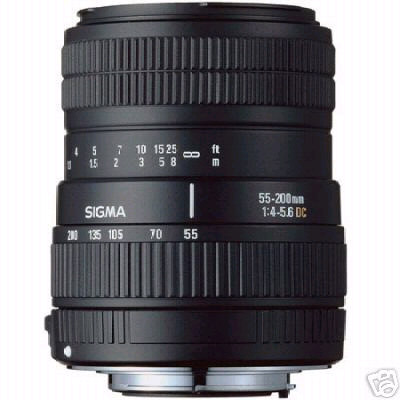No worries mate! Hope it's all helpfu!
As regards shooting F1 action... I won't lie to you, the professionals will be using f/2.8 or lower lenses, possibly with Image Stabilisation. The latter is another interesting one though, as there are a lot of misconceptions surrounding the subject. Manufacturers will often quote things like "IS technology effectively allows you to shoot the same image at one or two aperture stops lower" - that is true, but only in certain circumstances. IS technology counteracts lens movements and will steady the whole frame; but if you've got your camera on a steady footing, perhaps on a good tripod, the frame itself will be pretty steady - it's only the fast-moving subject within it which would blur, and IS won't help too much with that.
This is all pretty academic though, as f/2.8 telephoto glass starts at about £800 - £1,000; and a particularly long lens with IS can run to £4,000 - £5,000.
It'd be unfair to say that shooting F1 cars with something at f/4 or f/5.6 would be impossible though - there are a few other factors to be considered.
First of all is the weather and position of the sun. Obviously if the sun is in the background, you're going to struggle regardless of the glass you're using. However if you can get in a spot with the sun pretty much behind you (and shining straight onto the subject), and you're lucky enough to get some bright weather, you'll be running the maximum aperture you can (probably f/5.6 at maximum zoom), but hopefully there'll be enough natural light to allow a quick shutter speed. I'd be hoping for 800-1000 and above for good shots.
The other thing you could consider is the direction the cars take through your picture. Obviously if they're passing perfectly right to left (or vice-versa), you're going to need a pretty quick shutter to freeze the action with no blur. If however, you can position yourself so they're at a shallower angle in your picture, the movement will effectively be slower, affording you to be using slightly longer shutter speeds.
You can also consider the ISO sensitivity setting on your camera. In a perfect world you'll want to shoot as much as possible at ISO100, where the sensor is at its least sensitive - but delivers the best quality. If you need to though, you can bump this up and for each step you'll probably gain a stop or two of aperture (and therefore shutter-speed). Avoid going too high though, because this is where you'll get colour-noise coming into the picture. I normally shoot everything at ISO100 for quality, but if pushed I'll go up to ISO200 or ISO400. I'll rarely use ISO800 because this is generally where a lot of cameras start to get a little noisy, and at ISO1600 and above you can really see the noise in the pictures.
The final thing I'd advise is to shoot in RAW. I've not shot a JPEG with my camera for a long time now, because for starters when you do any post processing, you are basically trying to polish a ****. The image has been compressed and a lot of the colour and luminosity data is lost straight away. This data is very important in post-processing, as with something like RawShooter Essentials (free, discontinued, but still available to download), Adobe Camera RAW (in PS), or Adobe Light Room you can adjust exposure compensation, contrast, saturation and a host of other parameters almost losslessly. The same cannot be said when working on a JPEG. In short if you shoot JPEG you're not getting the full benefit of your camera's potential in your photos. There is one caveat to shooting RAW on fast-action though - the number of shots you'll get in 'burst' or 'continuous drive' mode will be fewer. Your camera might be able to fire off 10, 20 or more shots continuously in JPEG, expect 3-6 depending on aperture, shutter, light etc. in RAW mode. I wouldn't let this push me into using JPEG though, I'd just be more careful with my timing of the squeeze of the shutter-release.
The other thing you can do, if lighting etc. demands it - is try to 'track' your subject as you shoot. What I mean by that is if the car passes right to left, pan the camera right to left as you shoot. This is tricky to get right, but to be honest if you can get the technique it can produce some fantastic results, with a car perfectly focused and the background (crowd in grandstand etc.) with some great-looking motion-blur. I would advise some serious practice at this though - it is very tricky to get it right. The bonus is that on the day at least you'll have enough laps to do some attempting to track, and some trying to maximise the settings (ISO etc.) to keep the camera still. For practice it might be worth heading along to the side of a motorway or fast-road and spending an hour or two getting used to the technique. You might get some odd looks, but if it helps you get the photos you want at the Grand Prix it's gotta be worth a go!
Anyway, on to some zoom samples for you...
Firstly I have to say apologies for them not being great shots - It was a little windy and I didn't have the camera on the tripod so that made shooting a little more complicated.
The second thing to note is that the guide on the barrel of my lens is only a guide, so when I was going for 200mm I actually got 190mm; but it's not far off.
Anyway, the following images are (in order):
70mm, 100mm, 149mm, 190mm, 300mm
Regards,
Rob.

 , I'm still a newcomer to the world of SLR's,
, I'm still a newcomer to the world of SLR's,








